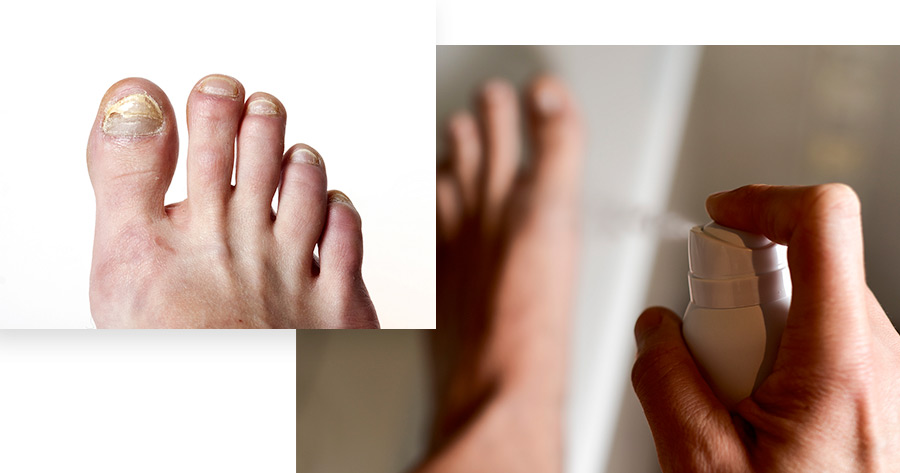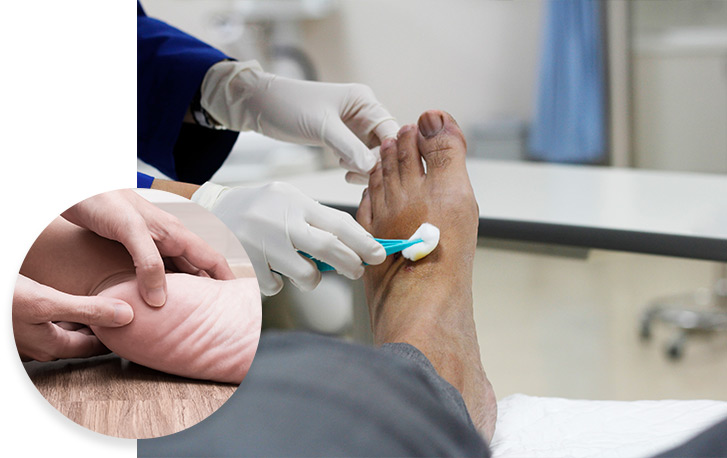What is Tinea?
Also known as tinea pedis, athlete’s foot is a fungal infection of the foot. The fungi associated with this condition grow in warm, damp places and live on dead tissue surrounding the toenails, hair and outer layers of the skin. There are three different types of athlete’s foot. Interdigital athlete’s foot is the most common form, occurring between the smallest two toes and occasionally spreading to the sole. Moccasin athlete’s foot begins on the sole of the foot and spreads to the side of the foot. Vesicular athlete’s foot is the least common type and presents itself as blisters on the bottom of the foot.


What is Ringworm (Tinea Corporis)?
Ringworm, also known as tinea corporis, is a fungal skin infection. While this condition is most common in children, it can affect people of all ages, as well as pets. Ringworm grows in warm, moist areas such as swimming pools and locker rooms. Individuals typically catch ringworm through contact with people, pets or items contaminated with the fungus. Ringworm can appear anywhere on the body.
Athlete’s Foot
Treatment for athlete’s foot varies depending on the severity of the condition. Regardless of the severity, the feet must stay clean and dry to prevent the growth of additional fungi. Mild cases of athlete’s foot are often treated with topical medications, while oral medications may be necessary for more severe cases.
Ringworm
Most cases of ringworm can be treated with over-the-counter creams. Persistent cases may require prescription pills to clear the infection. Patients being treated for ringworm can continue day-to-day activities with no limitations. The exact course of treatment depends on each patient’s individual condition and medical history.


Symptoms
Althete’s Foot
Symptoms of athlete’s foot include itching, burning, peeling, redness, blistering and/or cracking of the skin on the feet. Patients experiencing these symptoms should contact their dermatologist to ensure that proper care is received.
Ringworm
Ringworm typically causes a red, itchy rash. Despite its name, ringworm does not always present itself as rings. If you think you have signs of a rash, contact your dermatologist.
Diagnosing
Athlete’s Foot
To diagnose athlete’s foot, your dermatologist will take a scraping of skin from the affected area and examine it under a microscope. This will determine whether a fungal infection is causing your symptoms
Ringworm
To diagnose ringworm, your dermatologist will take a scraping of the rash and examine it under a microscope. This will determine whether ringworm is causing your red, itchy skin.


Preventing
Athlete’s Foot
- Wear footwear in public locker or shower areas
- Wash your feet daily
- Dry your feet thoroughly after showering
- Wear shoes that give your feet room to breathe
Ringworm
- Completely dry your body after bathing or showering, making sure you dry your feet last
- Wear adequate footwear in public shower and locker areas
- Change socks and underwear daily
- Refrain from sharing towels, sheets or clothing with others
Frequently Asked Questions
How can I get athlete’s foot (tinea pedis)?
Athlete’s foot (tinea pedis) is caused by different fungi, including species of trichophyton, epidermophyton, and microsporum. You can get athlete’s foot when you come in contact with these fungi in a public shower, swimming pool, gym, or any other place where you go barefoot. Using slippers or other ventilating footwear is recommended to prevent athlete’s foot. In addition, it is recommended to refrain from sharing towels or socks with someone else. Furthermore, make sure you wash your towels and socks at a high temperature.
Why do I get athlete’s foot (tinea pedis)?
Fungi grow, multiply and contaminate the skin under conditions that are favorable to them.
There are 4 factors that can contribute to getting athlete’s foot:
- Moisture: Fungi can live and multiply on sweaty, warm, wet feet. Dry and ventilate your feet well.
- Poor hygiene: Dead skin tissue is like food to fungi. Wash your feet and change your socks frequently.
- Increased pH value: Where skin touches (between toes), the pH value of the skin increases. This may harm the barrier function of the skin. Make sure your shoes are not too tight and that you ventilate them often.
- Damaged skin: fungi may enter cuts or scratches. Using too much soap can harm the protective fatty acids that protect your skin. Rinse your feet well with water and dry thoroughly.
I like to do sports. Am I at risk of getting athlete’s foot (tinea pedis)?
The fungal infection of the foot tinea pedis is also called athlete’s foot. This term is used because it affects people with sweaty, damp feet, which is typical of athletes. However, doing sports does not necessarily increase the risk of getting athlete’s foot. Anyone can get athlete’s foot (tinea pedis) and you can prevent it by taking the right precautions.
When should I see a doctor for athlete’s foot (tinea pedis)?
Athlete’s foot usually starts between the toes or at the bottom of your feet. It gives an itchy, burning feeling and the skin may look red, blistered and crack open. As with all conditions, the right time to see a doctor for athlete’s foot is when you first notice symptoms. At an early stage, it may be treated with a topical cream, however, at a more advanced stage, oral medication could be more effective. A specialized dermatologist can recommend the most effective treatment for your case.
